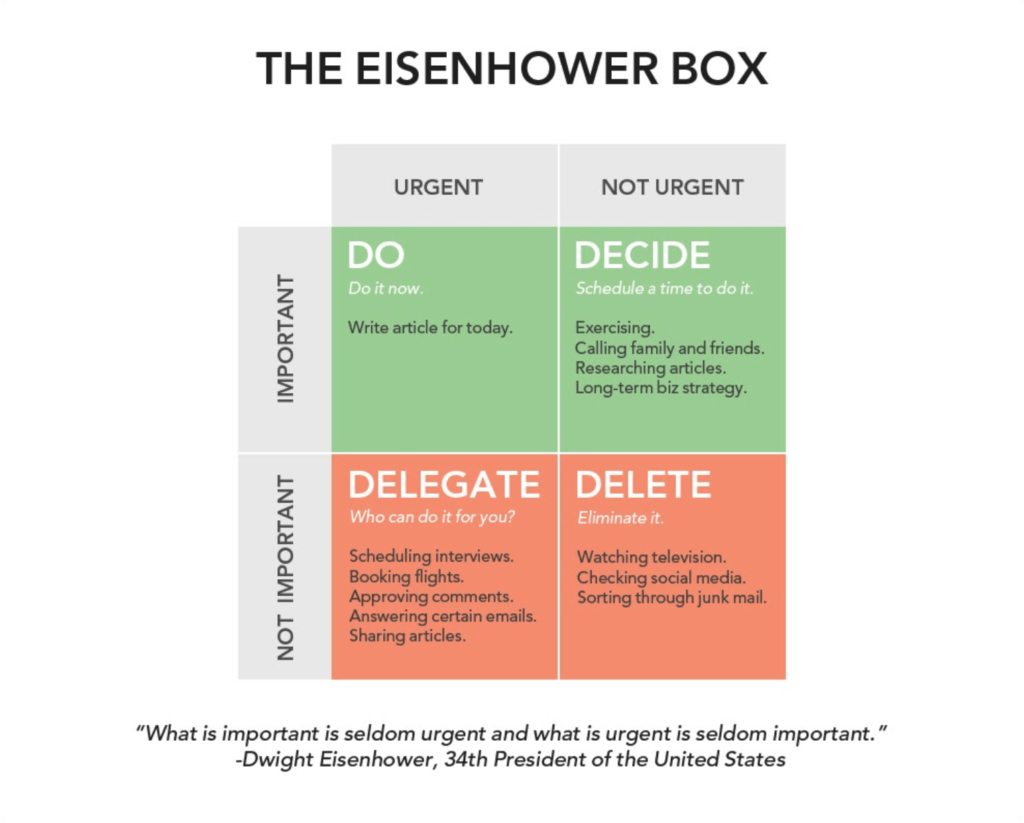How to Conduct a Quarterly Review of Your Marketing Health

Most of us visit our doctor at least once a year for a regular health checkup and see the dentist every six months. Amid busy lives, however, appointments are sometimes missed, forgotten or pushed to the back burner. That’s why those reminder postcards can be so useful!
Like your body’s health and wellbeing, your company’s overall strategic marketing also needs care and attention. Yet constant fire drills and competing priorities also make it challenging for B2B marketers to balance strategic business and revenue goals against day-to-day deadlines and requests coming from every corner of your company.
Before you know it, that cutting-edge website you just launched is five years old — reflecting out-of-date product images and content that’s no longer converting site visitors into customers. What’s more, the once relevant goal tracking you established doesn’t align with your company’s sales and business goals.
Because your website is the hub of your company’s marketing initiatives, it must also be the focal point of your company’s quarterly marketing reviews. After all, your salespeople tirelessly tweak and update messaging and the tools they use to interact with prospects and customers. By the same token, your marketing strategies and tactics — including the website — must be aligned with your sales group’s goals and messaging.
Regular “Checkups” Help You Grow; Align Sales & Marketing
With the rise of digital marketing, sales and marketing alignment is the fuel that helps drive growth, particularly for B2B companies in complex industries. Most marketing leaders who direct robust digital marketing programs are already holding meetings to review analytics and refine tactics that could improve business results.
Whether or not you’re not doing a weekly or monthly “smarketing” meeting, regular “checkups” at set intervals (quarterly or semi-annually) helps leadership keep sales and marketing initiatives synchronized and on the same page for the big picture. We recommend you organize a quarterly or semi-annual holistic marketing and analytics review. Here’s where you step back from the daily grind to review the big picture and make a plan that coincides with more seismic business initiatives or goals.
The secret to making your regular marketing health checkups successful is to first, meet on a regular cadence. For instance, if it’s quarterly, send a calendar appointment at the beginning of the year covering each meeting date. Secondly, prioritize your agenda, and to-dos and takeaways using the widely-embraced Stephen Covey time management matrix.
Covey famously adapted Dwight Eisenhower’s time management tool for his seminal book, “The 7 Habits of Highly Effective People.” The time management matrix helps people and companies prioritize work and activities around the Urgent and Not Urgent, while simultaneously classifying tasks or projects as Important or Not Important (Figure 1).

Follow these general guidelines to optimize your time and to-do lists:
Urgent and important tasks or projects need your immediate attention. (Do)
Not urgent, yet important tasks or projects can be scheduled on your calendar. Plan to spend the most time here, alleviating urgent crisis actions in the urgent and important box. (Decide)
Urgent and unimportant tasks or projects should be delegated to someone else. (Delegate)
Not urgent and unimportant tasks or projects can be ignored or deleted. (Delete)
Overall sure your Quadrant 2 tasks — Important, but Not Urgent — are your top priority and get done. These can be forgotten sometimes if you’re spending 80 percent of your time in Quadrant 1, but reflect your most important work.
A 7-Point Marketing Health Checkup Agenda
We recommend the following list to help guide your quarterly marketing health checkups — and keep you in the right quadrant.
1. Website Performance
- What feedback have you heard from customers, salespeople and staff maintaining the website?
- What’s working, not working? Are there pages of the site that are difficult to maintain or edit? Do any pages need retooling?
- What questions are prospects asking that could lead to new thought leadership content?
2. Sales and Marketing
- How have your sales and marketing priorities changed since your last review?
- Have new product or service launches changed the relevance or hierarchy of the content and navigation that you’re presenting to website visitors?
- What conversations is your sales team having with prospects? Is this narrative reflected on your website with appropriate content? [Do we have an example we can cite here?]
- Consider the sales (projects, products or services) you most want to close, and which are most likely to close. Is the website addressing the buying cycle for these prospects? What’s missing or getting in the way?
- Has your product or brand positioning language shifted?
3. Strategic Business Initiatives
- What new initiatives or organizational/marketing programs do you have planned for the next quarter?
- What new content or features will you need to create to support new product launches or sales initiatives?
- What new campaigns or organic search changes will be required?
- Are there any acquisitions or other significant changes to the business on the horizon?
4. Analytics Review
- Review a simple cloud-based dashboard for insights to guide changes and recommendations. (We like Google Data Studio.)
- What channels and locations are leading traffic to your site?
- Look at overall traffic patterns and trends, conversions and deal quality.
- Note top organic queries and landing pages.
- Review search engine and device breakdown.
- Note keyword rankings, relevancy and movements up or down.
- Examine PPC (pay per click) effectiveness; What search phrases, ad copy, keywords, and campaigns are leading to conversions and quality deals? Which are not?
- Review social media channels; What campaigns and channels are drawing quality traffic to the site? Which aren’t?
For more information regarding analytics and KPIs (key performance indicators), check out our comprehensive article “Keep it Simple With These Essential B2B Marketing Metrics.”
5. Heat Maps, Engagement and A/B Tests
- Review heat maps of your top traffic pages, or those most critical to the buying cycle. How are users interacting with these pages? Are they clicking where intended? Do cursor movements indicate interest or frustration?
- What do click-tracking videos show?
- What conclusions can you draw from your heat maps and click-tracking to modify and test in the next quarter?
- Review A/B test results and determine if you have enough data to make decisions, or need additional testing until the next period.
6. Content Review
- What content is old, irrelevant or thin? What needs to be updated, combined, redirected or removed?
- In addition to reviewing your most prominent site content, review data from Google Analytics for evidence of high bounce or exit rates. Additionally, what high-traffic organic landing pages no longer represent your brand?
- Are the people featured on your About Us or Leadership pages up-to-date?
- What recent work could make a great case study to feature on your site? Choose examples that tell a compelling story about how your company solves customer problems.
7. Prioritize Next Steps
- For each assignment or project, document who’s responsible and indicate a deadline.
- Make goals and next steps SMART (Specific, measurable, achievable, relevant, and timely)
- You may want to take on more than what’s reasonable — wanting to fix everything now. However, resist this urge. Prioritize and focus on a few critical action items that will have the most significant impact, and set reasonable goals, focusing on quadrant 2 (important, not urgent) as much as possible. It’s better to complete three high-priority projects than half complete six medium-priority projects.
- It’s also helpful to establish an hourly budget you want to apply against each item in the ensuing quarter. Budgeting hours ensure you’re setting aside enough time to complete your high-priority projects.
- For complex items, it’s helpful to create a user story — a technique that’s a common byproduct of teams using an agile software development methodology. A user story paints a clear picture of the end-user or customer, what the’s purpose of the item in question, and why does it have value. As Tech Target explains, “The purpose of a user story is to write down how a project will deliver value back to the user.” Simplified, you can create a user story with this Mad Libs sentence: “As a ____, I want ____, so that ____.”
- Finally, don’t leave the meeting without documenting who’s accountable for every initiative along with a firm deadline. It may also be helpful to hold one meeting to discuss projects and another for prioritizing and assigning responsibility.
Regular marketing health checkups guided by our 7-point agenda will keep your company focused on the tasks and initiatives that generate the greatest value. At the same time, this disciplined approach will ensure that both your sales and marketing initiatives are in lockstep.
BONUS: Fill out the form below to receive a free download of the 7-Point Marketing Health Checkup Agenda.
Helping You Generate Leads; Turning Prospects Into Customers
Helping B2B companies like yours create and manage synchronized sales and marketing programs is something we do every day. Windmill Strategy tracks your analytics using the industry’s best digital tools, helps you prioritize your next efforts and creates tactics that turn your prospects into leads and your leads into lifetime customers.
Looking for a more collaborative arrangement? We’ll stand side-by-side up with your marketing and sales teams to share best practices and years of experience working with a broad mix of sophisticated B2B companies. In the process, you’ll polish existing skills, develop new ones and build world-class marketing and sales capabilities.


